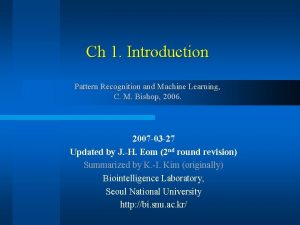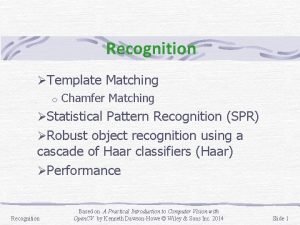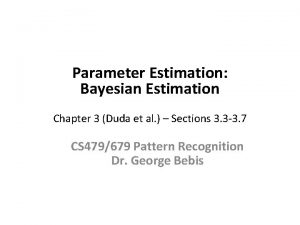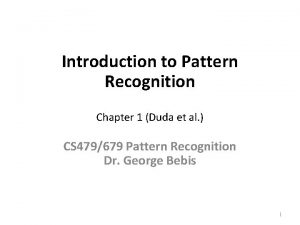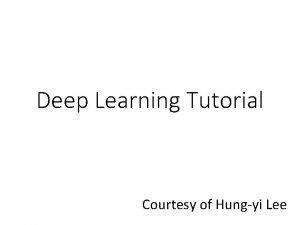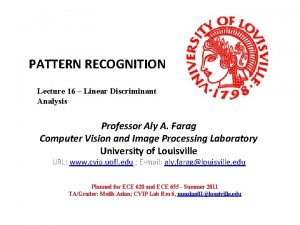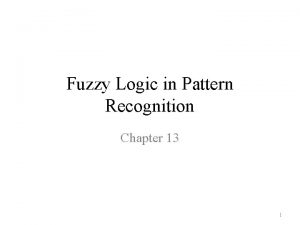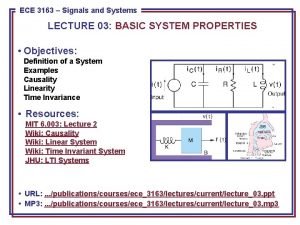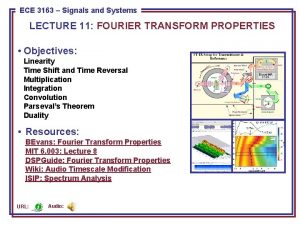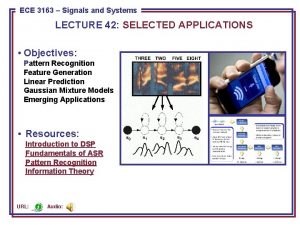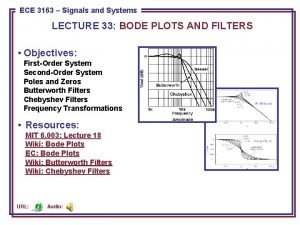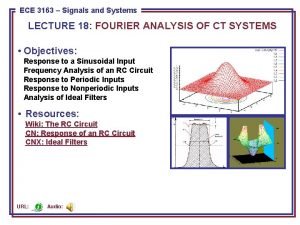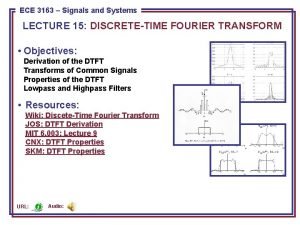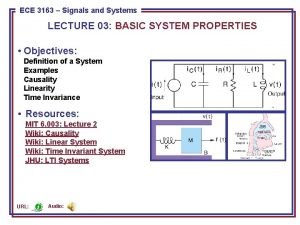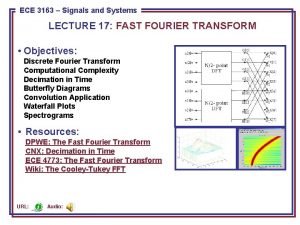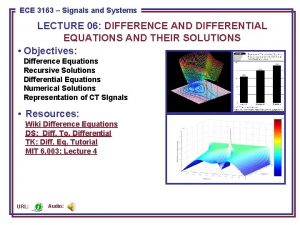ECE 3163 8443Signals Pattern and Recognition ECE Systems












- Slides: 12

ECE 3163 8443––Signals Pattern and Recognition ECE Systems LECTURE 07: CONVOLUTION FOR CT SYSTEMS • Objectives: Convolution Definition Graphical Convolution Examples Properties • Resources: Wiki: Convolution MIT 6. 003: Lecture 4 JHU: Convolution Tutorial ISIP: Java Applet URL: Audio:

Representation of CT Signals (Review) • We approximate a CT signal as a weighted pulse function. • The signal can be written as a sum of these pulses: • In the limit, as : • Mathematical definition of an impulse function (the equivalent of the unit pulse for DT signals and systems): • Unit pulses can be constructed from many functional shapes (e. g. , triangular or Gaussian) as long as they have a vanishingly small width. The rectangular pulse is popular because it is easy to integrate ECE 3163: Lecture 07, Slide 1

Response of a CT LTI System CT LTI • Denote the system impulse response, h(t), as the output produced when the input is a unit impulse function, (t). • From time-invariance: • From linearity: • This is referred to as the convolution integral for CT signals and systems. • Its computation is completely analogous to the DT version: ECE 3163: Lecture 07, Slide 2

Example: Unit Pulse Functions • t < 0: y(t) = 0 • t > 2: y(t) = 0 • 0 t 1: y(t) = t • 1 t 2: y(t) = 2 -t ECE 3163: Lecture 07, Slide 3

Example: Negative Unit Pulse • t < 0. 5: y(t) = 0 • t > 2. 5: y(t) = 0 • 0. 5 t 1. 5: y(t) = 0. 5 -t • 1 t 2: y(t) = -2. 5+t ECE 3163: Lecture 07, Slide 4

Example: Combination Pulse • p(t) = 1 0 t 1 • x(t) = p(t) - p(t-1) • y(t) = ? ? ? ECE 3163: Lecture 07, Slide 5

Example: Unit Ramp • p(t) = 1 0 t 1 • x(t) = r(t) p(t) • y(t) = ? ? ? ECE 3163: Lecture 07, Slide 6

Properties of Convolution • Sifting Property: Proof: • Integration: Proof: • Step Response (follows from the integration property): Comments: § Requires proof of the commutative property. § In practice, measuring the step response of a system is much easier than measuring the impulse response directly. How can we obtain the impulse response from the step response? ECE 3163: Lecture 07, Slide 7

Properties of Convolution (Cont. ) • Commutative Property: Proof: • Distributive Property: Proof: ECE 3163: Lecture 07, Slide 8 • Implications (from DT lecture):

Properties of Convolution (Cont. ) • Associative Property: Proof: ECE 3163: Lecture 07, Slide 9 • Implications (from DT lecture):

Useful Properties of CT LTI Systems • Causality: which implies: This means y(t) only depends on x( < t). • Stability: Bounded Input ↔ Bounded Output Sufficient Condition: Necessary Condition: ECE 3163: Lecture 07, Slide 10

Summary • We introduced CT convolution. • We worked some analytic examples. • We also demonstrated graphical convolution. • We discussed some general properties of convolution. • We also discussed constraints on the impulse response for bounded input / bounded output (stability). ECE 3163: Lecture 07, Slide 11
 Cm bishop pattern recognition and machine learning
Cm bishop pattern recognition and machine learning Chamfer matching
Chamfer matching Bayesian parameter estimation in pattern recognition
Bayesian parameter estimation in pattern recognition Vyr737
Vyr737 Fuzzy classification in pattern recognition
Fuzzy classification in pattern recognition Design cycle of pattern recognition
Design cycle of pattern recognition Pattern recognition
Pattern recognition Pattern recognition lab
Pattern recognition lab Pattern recognition clinical reasoning
Pattern recognition clinical reasoning Contoh pattern recognition
Contoh pattern recognition Discriminant function in pattern recognition
Discriminant function in pattern recognition Fuzzy logic in pattern recognition
Fuzzy logic in pattern recognition Pattern recognition
Pattern recognition
